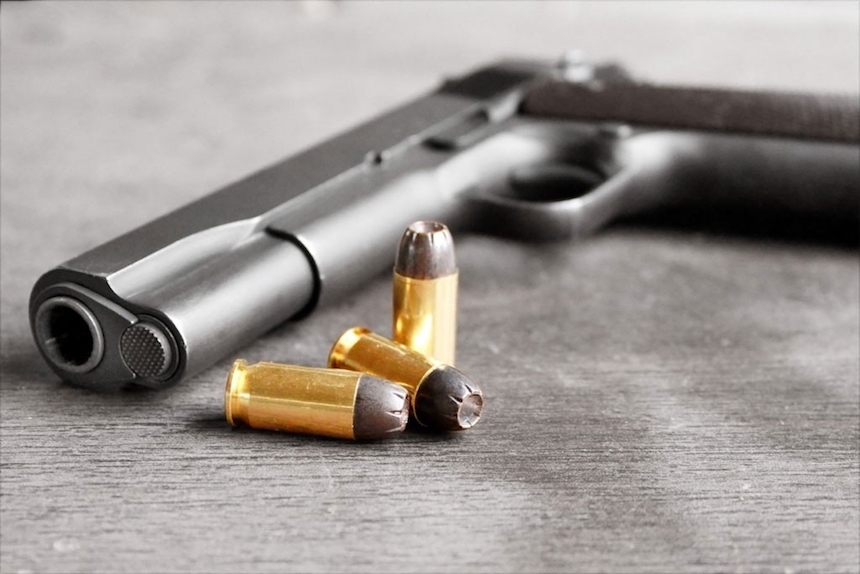
Val Lawless/Shutterstock
Gun violence resulted in initial hospitalization costs of more than $6.6 billion nationwide from 2006 through 2014 — an average of $734.6 million per year, according to a study by researchers at the Stanford University School of Medicine.
Stanford notes that in an analysis of data from 267,265 patients who were admitted for firearm-related injuries during the nine-year period, the researchers reported that the $6.6 billion figure is only a fraction of the total hospital costs incurred by gunshot wounds: It does not include costs of emergency room visits — medical costs for patients who are treated and released or those who are treated but die before admission — or hospital readmissions.
The study was published online in the American Journal of Public Health. The lead author is medical student Sarabeth Spitzer. The senior author is Thomas Weiser, MD, associate professor of surgery.
“There is a high cost for these injuries, especially because they are preventable,” Spitzer said. The study included hospitalization costs of shooting injuries that were self-inflicted, unintentional or due to assault.
At Stanford, 10 percent of trauma patients are admitted with gunshot or knife wounds — a small but important proportion of the patient population, Weiser said.
Little research on gun violence
Despite the scale of the problem, there exists surprisingly little research on gun violence from a public health perspective. This is, in part, due to a measure Congress passed in 1996 that restricts federal funding for firearms research, Spitzer said.
Past studies have looked into the total costs of firearm injuries — medical as well as social — but most have focused either on particular states or within narrow time ranges. Analyzing data from 2012, a Mother Jones investigation estimated that the annual cost of gun violence in America exceeds $229 billion, as much as $3.4 billion of which includes emergency services, police investigations and long-term medical- and mental-health care costs. The actual costs of hospital visits are difficult to tease out from these figures, and it is unclear who actually ends up paying for them.
“Firearm injuries are tied to one of the most controversial political issues in the country, so it is important for all sides to have access to fact-based research,” Spitzer said. “Cost information can be especially helpful when making health policy decisions.”
The Stanford team set out to estimate the national medical costs of firearm injuries over a nine-year period by using publicly available data in the Nationwide Inpatient Sample, the largest database in the United States, which houses information from about 8 million hospital discharges each year. The researchers picked patients who were admitted for firearm-related injuries and analyzed the severity of their wounds, the cost of their care, where they were hospitalized and how they paid for the hospitalizations.
Government bears large share of cost
Spitzer and her colleagues interrogated the data to address two primary questions: What were the total medical costs when gunshot victims were first hospitalized, and where did the financial burden of medical care fall?
The team found that the government bears about 40 percent of the total costs. “It’s a very high financial burden,” Spitzer said.
The researchers found that victims paid for hospital costs through Medicare, Medicaid, private insurance, or out of their pockets. Patients were overwhelmingly male, and there was a correlation between their insurance status and how they sustained their injuries. For example, shootings of young and poor individuals insured by Medicaid comprised two-thirds of firearm injuries, and they were most often victims of assault. In contrast, older Medicare-insured patients were more likely to suffer from self-inflicted gunshot wounds.
The study captures costs for a very limited experience because the costs of firearm injuries continue in many different ways, Spitzer said. “There’s a cost if you’re readmitted, there’s long-term rehab, and a lot of these patients end up needing long-term health care,” she said, adding that she and her colleagues will next systematically analyze costs of hospital readmissions.
“It’s amazing that we don’t know as much about the medical costs of firearm injuries,” said David Hemenway, director of the Harvard Injury Control Center, who was not involved in the study. “[This study] highlights that this is just the tip of the iceberg.”
— Read more in Sarabeth A. Spitzer et al., “Costs and Financial Burden of Initial Hospitalizations for Firearm Injuries in the United States, 2006–2014,” American Journal of Public Health 107, no. 5 (1 May 2017): 770-74 (DOI: 10.2105/AJPH.2017.303684)

